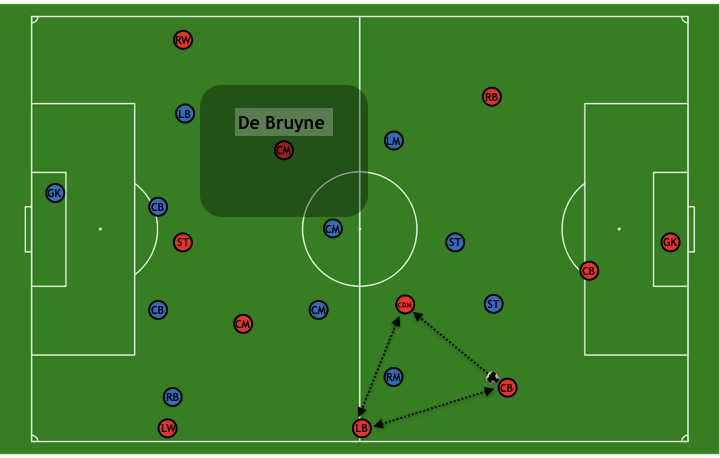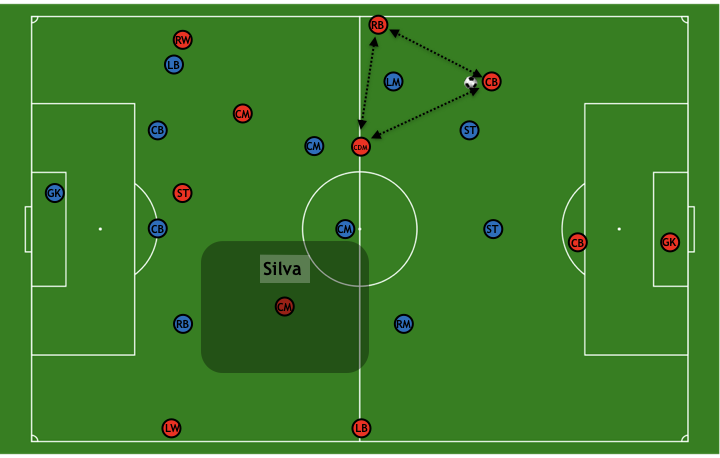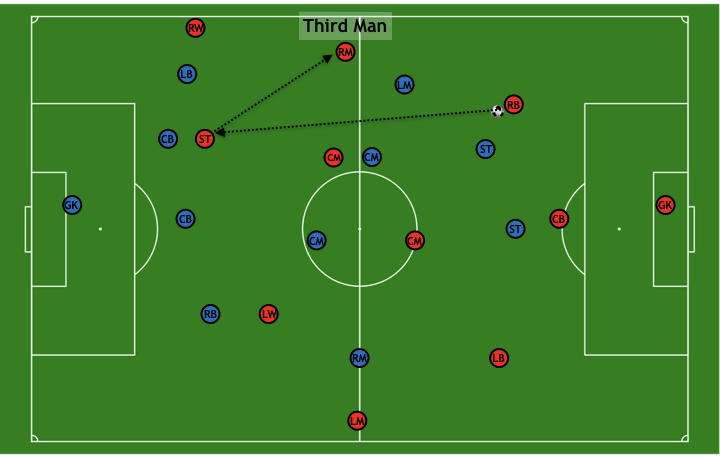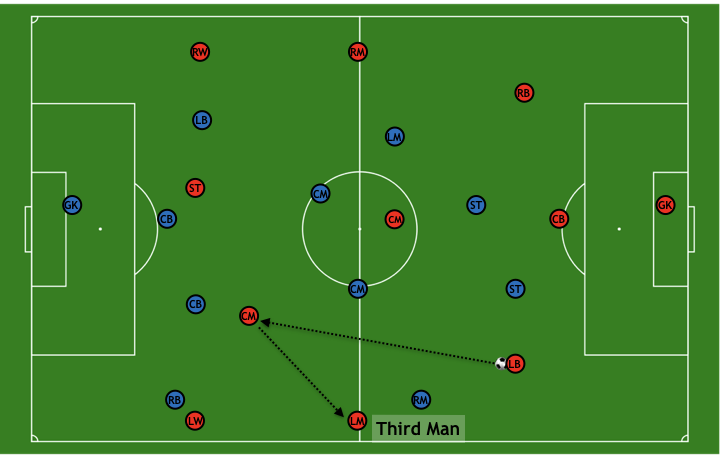Guardiola's Class
“Ideas are like rabbits. You get a couple and learn how to handle them, and pretty soon you have a dozen.”
On April 11th, 2007 in the small town of Sant Cugat, which borders on the northside of Barcelona, a recently retired professional player, who had never coached before, stood before a crowd of soon to be UEFA Pro Licensed coaches and discussed his thoughts on football. He delved into his thoughts and beliefs on how football should be played in order to be most efficient and successful. He gave the highly experienced coaches, who were lucky enough to be there this Wednesday afternoon, ideas and concepts which had been passed down to him by his mentors.
Yes, all of the coaches listening to this man preach football beliefs were most likely more experienced as coaches than he was. In that moment he hadn’t been in charge of a team for a single match yet. However, looking out in the crowd every single coach was furiously taking notes as they tried to grasp every word that came out of his mouth. They knew all too well that this man’s ideas were special. They came with the Cruyff branding. These words were to change football. Perhaps in 2007, they didn’t know just how profound that change would be, but they could feel it coming.
Within the next couple of months, this man would be named the manager of the Barça B team, within 15 months he’d be appointed as the next Barça manager replacing Frank Rijkaard, and two years after his clinic in Sant Cugat he’d be on his way to the elusive Treble season.
Since that 2007 coaching clinic, Pep Guardiola has singlehandedly changed how football is played. Teams have had to adapt how they play to match up with the type of football he mass introduced to the world.
Luckily for us, someone filmed this once in a lifetime clinic and the following findings are those ideas preached on that cloudy April 11th in 2007.
Numerical Superiority
Football, like all sports, is founded on the basis of equality. The laws of the game stipulate how many players each team is allowed to play with (7, 9, 11 depending on the age of the players). The laws attempt to create a level playing field in which each team has the same possibilities of winning. However, over the course of the last 100 years, this game has been played enough times, by some wonderfully critical thinkers who have figured out that by positioning players in different spaces, they were able to create these numerical superiorities, or have more players than the other team in given spaces. This concept is crucial to the success of maintaining possession of the ball and ultimately, improving the odds of winning the match.
For Guardiola, this is critical in the build-up of play. It’s fundamental to his coaching and playing philosophy, which of course was passed down to him by his mentor Johan Cruyff. Both mentor and disciple knew the importance of the ball, and that it was impossible to score without it. For this reason, both men implemented styles which rely heavily on being in control of the ball. Possession is king.
At this point, we begin to see why numerical superiority came to the forefront of possession-based football. It is easier to keep the ball when there are three attackers and only one defender, or four attackers versus their two defenders. The logic is simple, and any grown adult can rationalise it when it’s presented in the context of simple maths. However, when put in the scenario of an ever-changing landscape of an 11-a-side match, the lines of simple and complex can blur.
As with everything, the best place to start is with the why. As Guardiola mentions, the objective is to get the ball to our attacking players, who have unbalancing qualities and are the ones who are going to increase our probabilities of scoring a goal. Guardiola talks about the conditions in which these unbalancing players receive the ball. It’s very different when our player, who is most likely going to help us score a goal, receives the ball 30 yards from the goal, with their back to the goal and two defenders very close by, than in a one versus one opportunity in space facing the goal. These are the conditions Guardiola is referring to. We need to create greater probabilities of success for our top players.
With the why established, now we can focus on the how. As Guardiola so eloquently states, “Football is about rationally occupying the space, and the ball goes to the space.” This is the blueprint behind creating numerical superiority; are players positioned to outnumber the opposition in any given space?
When Juanma Lillo, a pioneer in positional football, was asked about his 4-2-3-1 system he said, “It was the most symmetrical way I could find of playing with four forwards. One of the great advantages of having the forwards high is that it allows you to play the midfield high and the defence high, so everybody benefits.” Lillo understood that in order to outnumber the opponent in specific zones, his players had to be assigned to certain positions, hence the name positional play.
This concept of numerical superiority is extremely important when a team is playing out of the back. At this stage in their possession, a team tends to have more options to create numerical superiority because the opposing team’s front line will generally consist of two or three players. For example, when you are faced with a team which is set-up in a 4-4-2, they will defend with two strikers compared to our three or four defenders. Naturally, there will always be numerical superiorities in this situation, as long as the team knows how to move the ball to find these advantages.
To some, when Guardiola’s teams are playing out of the back, it may appear as they are wasting time, unnecessarily risking losing the ball in front of the goal, slowing the game down, or all of the above. However, what his team is actually trying to do is attract players in the desired areas in order to move the ball forward with greater success. The team takes advantage of the numerical superiorities in their defensive third to guarantee possession.
As Guardiola mentions in the video, this is done through what is called ball circulation. Moving the ball throughout the pitch in order to find numerical superiority. This concept isn’t unique to football. In fact, it’s used in nearly all team invasion sports and it even has references to tactics of war. If your intention is to invade a certain area, you need to move the adversary away from that area using some form of deception or bait. In team invasion sports, the ball is used as that deception or bait in order to move the opponent.
Guardiola says, “The intention is not to move the ball, but move the opponent. That is to say, I take the ball here so my opponent comes because in the exact moment they come, I pass it. I pass it and progress. This is one of the keys: move the opponent where you want. Football and every team sport is played on the right and finishes on the left. Play on the left, pass behind, and play on the right.”
So by circulating the ball around the pitch we are moving the opponent out of the areas where we want to go. In the recent Manchester City documentary, All or Nothing, Guardiola explains this concept to his players. He states, “We play short here always to find there [indicating to a far player].”
He specifically talks about the centre-backs, Nico [Otamendi] and Vinny [Kompany], and the holding midfielder, Dinho [Fernandinho]. These three possess the ball with the use of short, simple passes to get the opponent to commit, or as Guardiola says ‘Jump’ (which is a literal translation from Catalan for ‘step towards’), and when the opponent does that, they find the space in behind. He then makes use of the whiteboard to explain his point. He describes a situation where they pass on the left side of the pitch to find space on the right with De Bruyne. The same on the right side of the pitch. Short passes on the right to find David Silva in space on the left side.


The final piece to a successful build-up is that knifing pass which breaks the line of pressure. The pass which splits defenders and makes its way to open space. This is the pass that should give our attacking players the best conditions to attack the goal. When they receive this pass, they should have favourable variables which allow for them to use their abilities to ideally score.
Obviously, the receiver of this pass needs to make either a checking run back into space or a breaking run in behind defenders. In the video, Guardiola makes a mention of this pointing out that this player is able to do this because previously the team has created a 3v2 situation which allows for movement into created space.
Rationally occupy space to create numerical superiorities in order to attract defenders with the use of ball circulation with the final objective of creating space for unbalancing attacking players in the final third. This is positional play defined by Guardiola.
The Third Man
On several occasions, I have discussed football’s principles of play and how simple they can genuinely be. Possess, progress and finalise. In order to score a goal you must first be in possession of the ball. Once in possession of the ball, the team must progress the ball towards the opposition’s goal to hopefully successfully finalise the play and receive one point for a completed goal.
Guardiola’s next point has its implications in the progression principle of play. If the objective is to advance the ball, the method we can use to do this is a positional play essential called the third man. He discusses in great detail this concept and why he believes it to be vital in the progression of the ball. However, before we delve into the specifics of his thinking and this important tool, it’s important to remind ourselves of one the most important notions in team invasion sports, totality.
People prefer when concepts and ideas are clearly defined and compartmentalised. For example, us coaches like to talk to our players in terms of attack and defense. However, when we attack we are only an instant away from defending and conversely when we defend. Therefore, it’s impossible to say that when you attack you are only attacking. To quote the brilliant Oscar Cano Moreno, “Take into account that during the attacking process you are creating future defensive conditions and vice-versa.” Football is fluid, continuous, and inseparable. Attacking is defending and defending is attacking.
Guardiola states, “you have to be very conscious of the risk playing out of the back entails.” And he’s right, there is higher risk when playing out of the back. Not only is there a risk of losing possession in your own defensive third but additionally as the back line advances the ball up the field, the space left behind them leaves them more prone to a counterattack in the case of losing possession. These are the risks Guardiola, Cruyff, and other possession based managers have always been aware of.
However, before conceding to fear and abandoning this style of play, brilliant football minds devised schemes and movements which would allow their teams to play out of the back and maintain possession all the while reducing the risk this entailed. Enter the third man concept.
The idea is simple, before anything else, the player in possession of the ball should look long and pass to a player checking into space. This player can then lay it off back to a third player who is further up the field than the first player who played the long pass. Guardiola uses the example of a centre or outside back playing a deep ball into a checking striker who lays the ball off to a midfielder resulting in the ball progressing up the field with less risk.



There are other variations to the third man concept which you can see in the previous illustration but the execution of it is always the same; play a deep player with a pass that progresses the ball and then leave it to a player who is facing the opponent’s goal. Figuratively speaking, you take two steps forward and one step back. You do this enough times and you’ve moved up the entirety of the pitch.
As Guardiola explains in the video, by utilising this movement the moment the ball is passed into the path of the awaiting deep player there is always at least 4 defenders, if not more, behind the ball. This means in case of any loss of possession the team is never in danger of a counterattack.
As I mentioned before, and as Guardiola pointed out, football is inseparable. As you can see, using the third man to advance the ball creates positive conditions to defend in the case of a loss of possession; it protects the team from counterattacks. Additionally, when moving up the field using the third man, the natural positioning of the players will be compact because they must always be in the correct place at the right time to support their teammates. The team will advance as a group, and in doing so again will improve the defensive conditions if the team were to lose the ball. If the opposing team intercepts a pass there should be two or three players surrounding the ball who are able to quickly press the opposing ball possessor.
Timing is everything when using the third man, one second too early or late and everything falls to pieces. When watching Pep’s team move the ball up the pitch employing the third man, one notices the synergy, cooperation and reciprocity. It’s impossible not to be in awe of the timing, rhythm and tempo. Players need to have almost telepathic communication. The kind of communication which doesn’t need a word but simply a gesture. The pass dictates not the second player’s run, because it’s too late at that point, but the third man’s run. The one which isn’t on at the moment of the pass but in two moves. When the receiver’s receiver already knows their options, that is when the third man will be most effective. That’s when the true beauty of positional play will be on full display.
Defending Space
Many believe that positional play is strictly in attack, however, as we have discussed on many occasions it’s impossible to separate football into distinct parts. The totality of football must be preserved in all moments. Consequently, positional play is as present in defence as it is in attack. The importance is just a vital to the success of the team.
Guardiola’s Barça were obviously known for their magical sequences in the attack, although where they truly excelled was in their defensive positioning and pressure. They were able to regain possession in situations where they were had most favourable conditions in attack. Upon winning the ball back they were already creating dangerous situations for their opponents.
This type of defensive system relies heavily on the recognition of spaces and marks. Teams which want to effectively implement such systems need players who are capable of perceiving the space around them continuously and based on that information making immediate decisions on defensive duties. Having players who are capable of performing this cognitive cycle at lightning speed is the difference between a team who can transition between attacking and defensive moments and a team which can’t. Guardiola requires intelligent players. He demands his players to be perceptive in all moments when they step onto the pitch.
Guardiola’s defensive system is simple. When not in possession, every player is responsible for two players. As he explains in the video, when positioned between attackers they are able to defend them both. Through simple positioning, Guardiola empowers his players by giving them the feeling that they can achieve this. When each player is essentially marking two players, the entire team’s defensive capabilities improve. When executed correctly, defending as a team becomes effortless, with each player knowing their responsibilities the defensive entity morphs into a swarm, suffocating players near the ball, relentless until they regain their treasured possession.
As Guardiola states, the beauty of this system is that it gives the opponent the sense they are in no danger. They feel as though they are not being marked, and within seconds they are being hounded by two players.
This of course requires tremendous understanding between players. They must communicate verbally and non-verbally. The job of the coach is to transmit these defensive concepts to their team well enough that the players take ownership of the defensive system. Only when they reach this kind of understanding of concepts will they communicate efficiently between each other. With more efficient communication comes greater unity and defensively that means defending as a whole.
Read: A Transitioning State of Mind
As we come full circle, we can now begin to discuss what this type of defensive positioning is doing in terms of our attacking shape. As we’ve discussed, in this type of defensive system, players position themselves between attacking players. By doing this, they are creating those necessary conditions to attack. Logically, when we’re in attack we want to occupy space (avoiding defenders) so by defending between players we are already doing that in the case of recovering possession. When a player manages to dispossess an attacker, that player should know their teammate is already in space. With an accurate pass the defensive-attacking cycle begins again.
Totality
Developmental coach and author, Jennifer Garvey Berger speaks about the importance of seeing systems in order to fully embrace complexity in her book Simple Habits for Complex Times. She states, “Seeing the system allows us to step back from our patterns and habits about thinking about the world and instead be more intentional and explicit about the way we approach a problem or situation—especially when it comes to the complexity of the situation.”
When we embrace complexity in the world and get away from the cause-and-effect narrative our brain utilises to make better sense of things, we begin to understand the system as a whole. In doing so, we take into account the relationships and interconnectivity between each part.
Within the football system, there are no separate parts but moments that are infinitely interconnected. These moments are not sequential but consequential. Defence affects offence and offence affects defence. Passing near gets us far. Moving left places us right. Going backward moves us forward. Attack to defend. Defend to attack. When you step away and see the game from afar, you see the complexity. It’s a difficult concept to explicitly communicate but Guardiola did his best in 2007 and in the last 11 years he’s tried to show us implicitly, now let’s furiously take notes.
“If your past was an experience, make your tomorrow common sense.”

